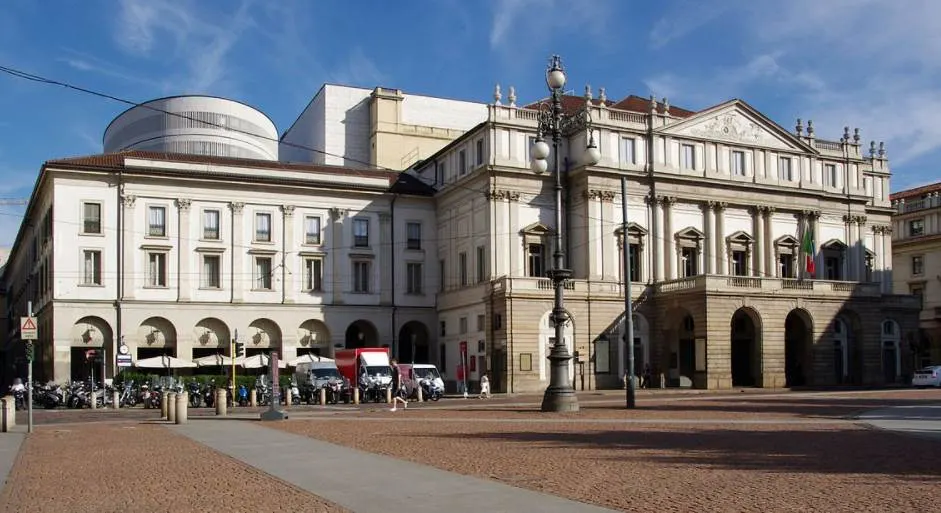If you want to enjoy an opera or other performing arts event in one of the most fascinating settings in the world, then this historic opera house is the place to go.
Let’s take a closer look at some of the most interesting facts about La Scala, a magnificent building in Milan that is home to various renowned performing arts organizations.
1. It’s located right in the heart of the city
La Scala is the nickname of the building known as “Teatro alla Scala,” the main opera house in the second most populous city in Itlay, Milan.
This magnificent building is located right in the heart of the city, just north of the most prominent landmark in Milan, the famous Duomo of Milan.
It’s located on a square that was named after it called “Piazza della Scala.” This picturesque square is remarkable because it features a statue of the Italian polymath Leonardo da Vinci, a man who lived and worked in the city in the late 15th century.
The square and opera house is connected to the Piazza del Duomo via the equally amazing Galleria Vittorio Emanuele II, arguably one of the most impressive shopping malls in the world.
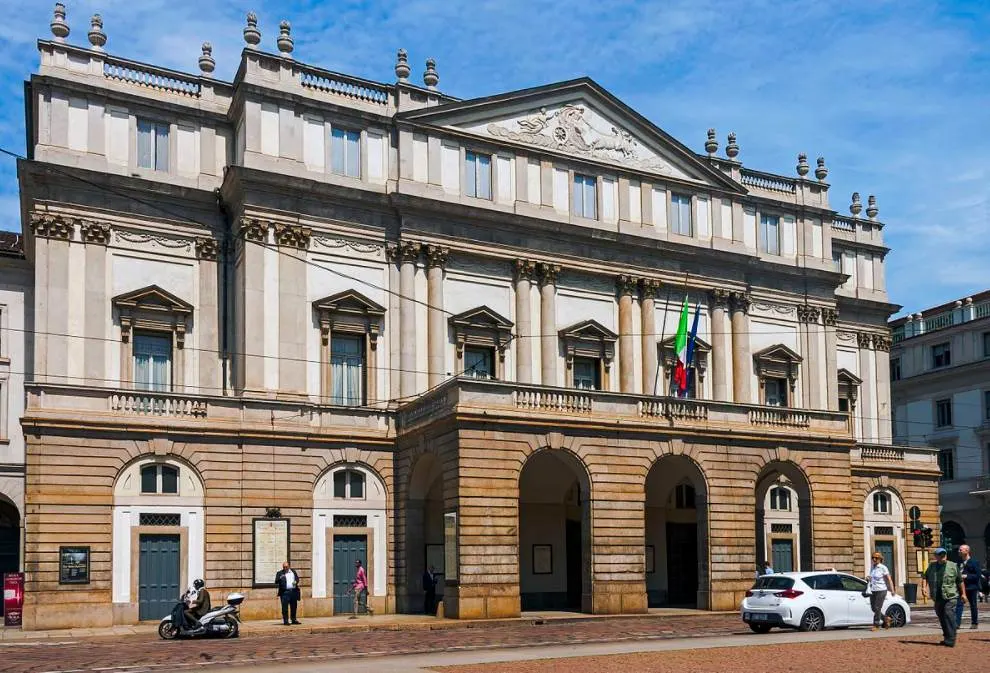
2. it was built in the late 18th century to replace an even older theater
Today, the opera house is the home of various performing arts organizations, including La Scala Theater Chorus, La Scala Theater Ballet, La Scala Theater Orchestra, and the Filarmonica della Scala orchestra.
All these are considered to be some of the most renowned in the world, and the fact that the opera house has a history of about 2 and a half-century certainly plays a role in that.
The current opera house was completed in the year 1778 and was a replacement of the “Teatro Regio Ducale,” the main venue in the city between December 26, 1717, and February 25, 1776.

Unfortunately, the happy yearly carnival gala in 1776 ended in disaster when this rather humble venue burned to the ground.
3. The original theater had approximately 3,000 seats
The theater had been the main meeting place of the Milanese upper class for multiple decades. That’s why a group of 90 wealthy individuals made a plea to the Ferdinand of Austria-Este (1754-1806), the governor of the Duchy of Milan at the time, to build a new theater.
The second plan that was submitted was personally approved by Empress Maria Theresa (1717-1780), the Habsburg ruler, and the construction was completed just 2 years later.
The theater opened its doors with approximately 3,000 seats which were divided into 678 boxes and 6 tiers. The main floor in front of the stage didn’t feature chairs, which was common at the time.
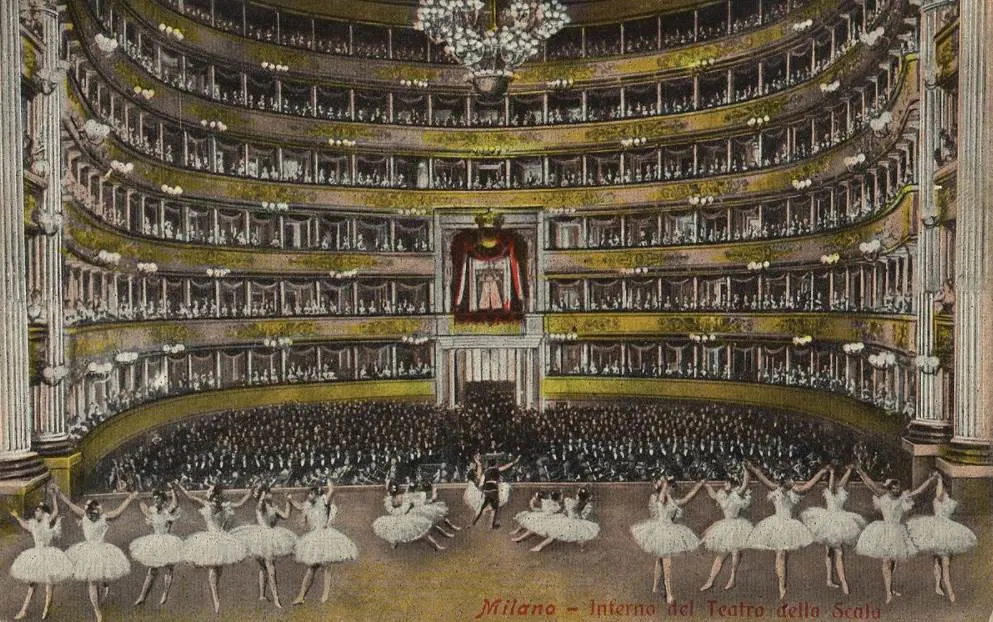
4. The current layout of the building was completed in 1907
Regardless of the massive scale on which the original version of La Scala was built, the infrastructure of the building became completely outdated in the early 20th century.
That’s why the theater underwent a complete renovation that was completed in 1907, and the current layout of the building dates back to this project.
The boxes were drastically improved which resulted in a smaller capacity of 1,987 seats, but which made it a lot more comfortable to enjoy the performances.
5. The opera house reopened in 2004 after a 2-year renovation
The theater was bombed during World War II and was rendered completely useless in 1943. It was, however, quickly rebuilt and opened its doors once again in 1946.
The final renovation project took nearly 3 years to complete between early 2002 and late 2004. The performances during this period were conducted at the new Teatro degli Arcimboldi, an opera house especially for this purpose just outside of the city.
The main reason why the business of opera performances continued was the fact that the renovation cost a whopping €61 million.
Regardless of the modern elements that were integrated into the theater, the architects did everything they could to ensure the authentic historic character of the building and venue were retained, something that has worked remarkably well.
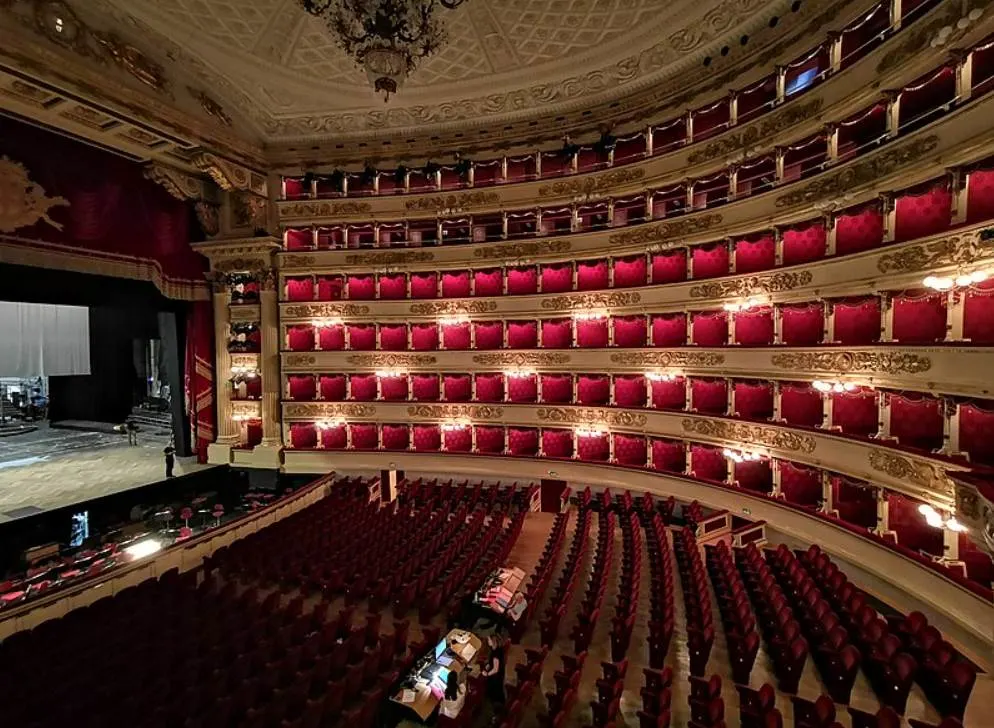
More interesting facts about la Scala
6. The opening day of the opera season is held on a special day, December 7. This is the feast day of the patron saint of Milan called Saint Ambrose (340-397), a man who became the Bishop of Milan in 374.
No opera or other performance must continue past midnight according to the local tradition. If needed, the performance will start in the late afternoon just for this reason.
7. The name “Teatro all Scala” refers to a church that was located in this location before the opera house was constructed. This church was completed in 1381 and demolished in 1776 to make way for the theater.
This church was called “Santa Maria alla Scala” about Beatrice Regina della Scala (1331)134), the wife of Bernabò Visconti (1323-1385), the Lord of Milan at the time.

8. Similar to the critical audience on the front row at the Wiener Staatsoper in Vienna, La Scala has a similar crowd. These are called the “loggione” and are located in a section above the theater’s boxes.
While they do appreciate a great performance and will make it known that they enjoyed it, they are just as likely to boo the underperforming singers off stage. Yes, these “logionisti” surely mean business when it comes to the critical reception of the performers!
9. One of the most remarkable facts about La Scala is that it was originally much more than an opera house. The foyer featured as a casino in which gamblers could play cards or roulette, and the main floor (which didn’t have seats back then) was used for all sorts of shady practices.
Mary Shelley once tried to enjoy an opera performance but this was virtually impossible as she wrote:
The theatre of La Scala serves, not only as the universal drawing-room for all the society of Milan, but every sort of trading transaction, from horse-dealing to stock-jobbing, is carried on in the pit.
10. A fire burning down the building was always a real possibility, especially during the time that the stage was illuminated with 84 oil lamps and the auditorium with an estimated 1,000 more.
The safety measures, until the time that these were replaced with initially gas lamps and then electric lamps by 1883, was to keep 100’s of water buckets filled in the rooms nearby.
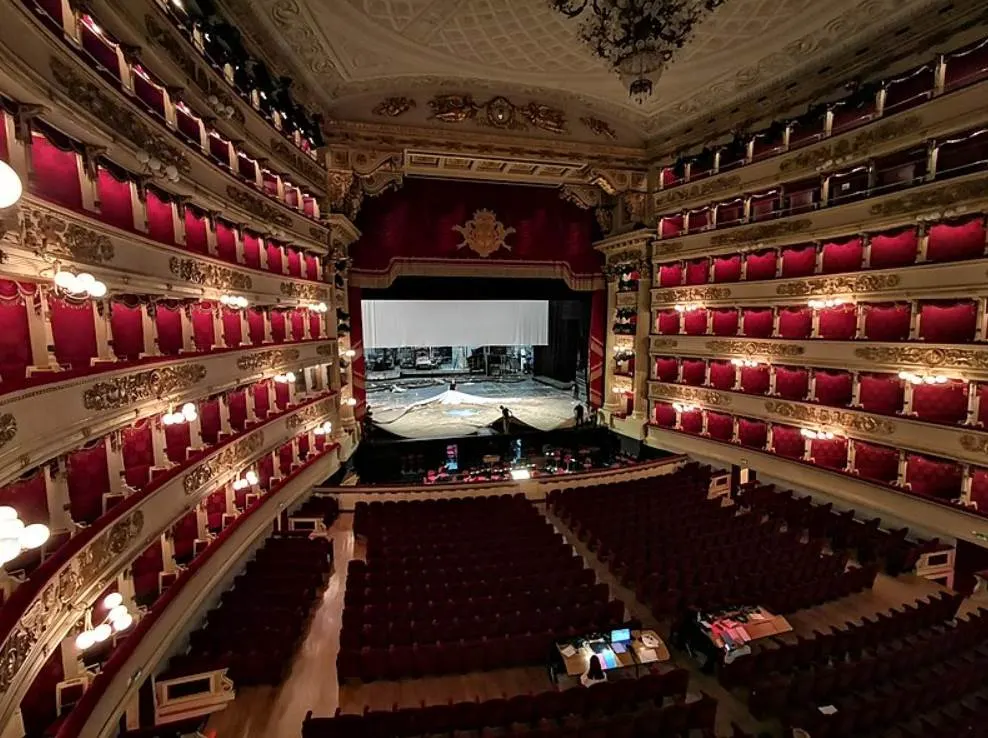
11. Apart from its historic importance, the other reason why the various performing arts organizations at the theater are considered to be some of the most renowned in the world is that the complex also features a training center.
This is called “La Scala Theatre Academy” and the greatest talents are professionally trained here to start a successful career in music, dance, stagecraft, and even stage management.
12. If you want to learn everything about the history of La Scala then there’s an adjoining museum called “Museo Teatrale alla Scala.” This museum provides a complete overview of the most important events in the theater’s history.
Apart from several paintings, statues, and documents, the museum also has a large number of authentic costumes on display used during performances starting in the late 18th century. That’s quite an amazing collection!
